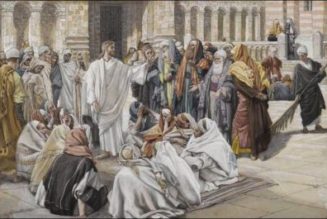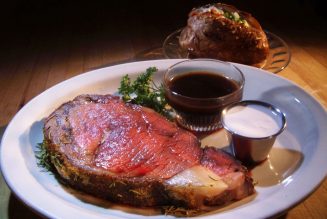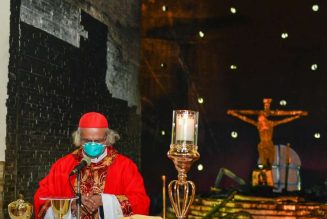In 1778, two decades before he became the second president of the United States, John Adams nearly died at sea. Actually, by his own count, he came close to dying six different times.
I discovered this while researching my new book, Author in Chief, which traces the history of U.S. presidents and the books they wrote. Adams, it turns out, wrote America’s first presidential memoir shortly after leaving office. Autobiography has always been popular in this country. Of the first five presidents, three others besides Adams tried writing their life stories, though they usually focused on their public roles and refused to share anything too personal.
Adams’s book was different because Adams was different. He was emotional and impulsive, and those traits pushed him to write an autobiography that was shockingly intimate. You could see this when he wrote about his private life: “My children may be assured that no illegitimate brother or sister exists.” You could see it when he wrote about his enemies, including Alexander Hamilton, who’d recently died after a duel with Aaron Burr. Hamilton’s grisly death did not give Adams pause. In fact, Adams wrote that he would not forgive his rival for their disagreements just because “the author of them, with a pistol bullet through his spinal marrow, died a penitent.”
And yet the best place to see Adams’s passion, I came to realize, was in his thrilling retelling of his time at sea during the Revolutionary War. It’s one of the longest and most revealing episodes in his forgotten book, a story that captures the adventure and brutality of a transatlantic voyage in the 18th century during wartime. Here, largely in Adams’s words, is that lost tale.
Early in 1778—during the same bitter winter that George Washington and his soldiers spent at Valley Forge—Adams said goodbye to his family in Massachusetts. Congress had asked him to go to France to serve as a diplomat, and Adams, as always, had said yes. John Quincy, his ten-year-old son, would accompany him on the voyage, meaning two future presidents would be making the trip. On February 13, Adams and his son boarded the Boston, a 24-gun frigate. They did not join the ship until just after it had sailed outside its eponymous city, in part because Boston boasted plenty of British spies. But that was hardly the only thing to fear. For both John and John Quincy, this would be their first time on so large a ship.

The Boston was a newer vessel with a newer crew, but it had experienced leaders, including Samuel Tucker, a burly captain with a voice so loud that Adams could hear him pray through the cabin walls, and William Barron, a lieutenant who’d sailed all over the world. Adams admired both men, though he noted disapprovingly that Barron had once worked in the slave trade. But he still felt anxious about crossing the Atlantic, which could take three weeks or more—often much longer in the dead of winter. He fretted about seasickness, bad weather, and enemy ships. In his autobiography, he summarized his mood with characteristic honesty: “I supposed I had bid farewell to my native shore perhaps forever.”
On February 17, the Boston finally began its voyage. By the next day, Adams had checked off the first of his fears. More than half the crew became sick, including John and John Quincy. The ship’s smells worsened their nausea: the smoke from the kitchen, the salt from the sea, the sweat from the nearly 200 passengers and crew, packed in tight.
Then, on February 19, the Boston spotted three sails in the distance. It was a tense moment for any ship of that era. Were they British or French, enemy or friend? Did they boast better cannonry than the Boston? Most pressing: Could they catch up?
The ships turned out to be British. The Boston outran two of them, but the third one stayed close. The chase stretched on for days. At dawn, Adams would climb on the deck and scan the horizon—at first it would look like they had escaped, until he spotted a stubborn sail. “Sometimes she gained upon us,” he wrote, “and sometimes we gained in our distance from her.” Tucker and Barron ordered their crew to keep the Boston’s cannons rolled out and ready, their barrels jutting from the sides of the ship, their powder and shot piled beside them.
The Boston escaped its pursuer on the 21st, but it soon ran into a new problem. The wind was picking up; dark clouds were filling the sky. That night, a terrible storm hit. The Boston, with its guns still rolled out, was not prepared, and everyone rushed to store the weaponry. A dazzling bolt of lightning struck the main mast. Somehow it missed the casks of gunpowder still strewn across the ship. But it hit a sailor, leaving a scorched divot in his shoulder, a nasty wound that would eventually kill him.
The storm dragged on for three days. The churning sea—“vast mountains of water above us, deep caverns below us”—caused the ship to pitch and roll. Even below decks, even when they screamed, the passengers could not hear each other over the gales, the gushing water, and the chairs and trunks slamming around. The only way Adams and his son could keep still was to grip each side of their bed and brace their feet against the bottom. The worst sound, Adams wrote, wasn’t the storm. It was the Boston itself, the way it seemed to be breaking apart: “a constant cracking night and day from a thousand places in all parts of the ship.”
Once the storm ended, it took several days to repair the Boston’s mast and get back on course. The sailors started whispering about omens and luck. “They said the ship had been so unfortunate that they believed some woman was on board,” Adams wrote. “Women, they said, were the unluckiest creatures in the world at sea.”
By the final day of February, the ship was making good progress again. Adams remembered sleeping “as soundly as in my own bed at home.” He confessed that the chase and the storm had unsettled him, but he was proud of how he’d handled the danger in the moment. (He was even prouder of John Quincy: “The child’s behavior gave me a satisfaction that I cannot express.”) Now they both tried to block out their unease. Adams practiced his French, a language he would need as a diplomat. He distracted himself by cataloging how frequently the sailors swore (“a most abominable degree”). He noted how filthy the Boston’s kitchen and quarters were, as if they’d been designed, he clucked, to “have bred the plague.”
The calm didn’t last. On March 10, the Boston’s crew spotted another British sail. This time the Americans gave chase. After Tucker asked Adams to go below, the Boston sped toward the ship, an armed British merchantman named the Martha. The Martha fired several shots at the Boston, the cannonballs buzzing over the Americans gathered on the quarterdeck. The Boston curved around, revealing its superior cannonry, and the Martha immediately surrendered. As Tucker checked on his crew, he saw John Adams with them, brandishing a musket.
“My dear sir,” the captain asked, “how came you here?”
“I ought to do my share of fighting,” Adams replied.
Tucker put a small group on the captured ship, to pilot it back to America, and the Boston resumed its voyage to France. Adams continued to struggle with seasickness. Using a dual-language edition of Molière’s plays, he tried and failed to work on his French. “Our little world was all wet and damp,” he recalled.
A few days later, the Boston encountered yet another ship—French this time. The Boston prepared a signal shot, to convey its friendly intentions, but as the cannon fired, it exploded, spraying barrel shards all over the deck. Several sliced into the right leg of Barron, the lieutenant. It was a gruesome injury. The doctor on board decided to amputate, and Adams held Barron in his arms and listened to him talk about his family while the doctor applied a tourniquet, then sawed off the leg just below the knee. The lieutenant died a few days later, with the whole ship attending his burial at sea.
By this point, the Boston was finally closing in on the European coast, but its bad luck was not over. Another five-day storm shook the ship so violently that Adams had to hug a beam to stay upright. Then an officer got angry at a disrespectful passenger and chopped off his big toe. Finally, there was one last encounter with the British—two hulking men-of-war that sailed so close to the Boston that Adams could clearly identify individual crew members in the moonlight. The ships kept sailing, a surprise for which Adams and the Americans were thankful.
At last, on March 23, five weeks after the Boston had departed, a lookout spotted the Spanish mainland. Adams borrowed a telescope to see it for himself. Soon he and John Quincy were looking at windmills and church steeples on the shore. They saw flocks of sheep and Spanish farmers plowing their land. In his autobiography, Adams remembered his emotions at the end of this voyage—his relief and wonder. “How many dangers, distresses, and hairbreadth escapes had we seen?” he wrote.
The voyage was not quite finished, however. Once the Boston approached the coast of France, it had to spend several days waiting to dock, a peaceful but frustrating delay brought on by uncooperative wind. “Nothing could be more tedious to me than this idle life,” Adams admitted. “I had not yet learned the French word, ennui, but I felt enough of it.”
More than two decades later, after Adams had served as president for one term, he lost to Thomas Jefferson in the election of 1800. He responded by entering another period of “idle life.” The ex-president retreated to Massachusetts, to the home he called Peacefield. He started working on his autobiography, rereading old diaries, studying histories of the Revolutionary War, and writing more than 400 pages.
Adams never finished the book. The reason why is right there in his description of the end of his 1778 voyage. Writing a memoir eventually became as frustrating to him as floating on a frigate just off the coast of France. He could write vividly about the shock of being on that ship—about the sights and sounds that, as he wrote of the “cracking” storm, “were new to me, except in the histories of voyages and the descriptions of the poets.” But he could never keep it up for long. In the end, the same passions that made Adams a radically personal writer also kept him from completing his book. He didn’t want to describe life, and he certainly didn’t want to describe history. He wanted to live it.








